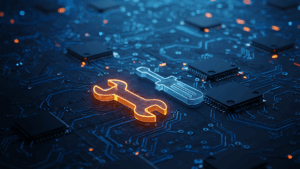When Microsoft ends support for Windows 10 on 14th October 2025, it will mark a turning point for many organisations still relying on this operating system. Without security updates, patches, or technical support, businesses that remain on Windows 10 face serious cybersecurity and compliance risks. For many, the shift may seem daunting, but delaying action only increases cost, complexity, and exposure.
This transition is not just a technical event. It is a business issue that requires leadership, planning, and a clear IT strategy. Understanding the risks and knowing how to respond can help organisations move from reactive fixes to a more secure and resilient foundation.
The Security Risk of Staying on Windows 10
Once support ends, Windows 10 will no longer receive critical security updates. This creates an environment where attackers can exploit vulnerabilities without fear of a fix. Outdated systems are a prime target because they often lack the ability to defend against modern threats.
For organisations in industries with strict compliance requirements, unsupported systems can also lead to regulatory breaches. Auditors and insurers increasingly expect businesses to demonstrate that their technology environment is up to date. Failing to replace or upgrade Windows 10 could create audit failures, insurance complications, and reputational damage.
This is where proactive IT support becomes critical. Rather than waiting for problems to arise, businesses should work with trusted partners to plan a secure migration and ensure that all systems remain fully protected.
The Financial and Operational Costs
It is easy to underestimate the hidden costs of staying on outdated systems. Maintaining unsupported technology often requires specialist knowledge and time-consuming manual work. This places additional strain on internal IT support teams and diverts resources away from projects that drive growth.
For businesses in growth mode, scalability is also at risk. Legacy platforms struggle to integrate with new applications or cloud solutions, creating bottlenecks that slow down operations. Without modern systems, it becomes harder to adopt modern managed services, scale infrastructure, or implement automation.
Working with a managed service provider ensures that organisations can manage these transitions more effectively. Providers of IT services and IT managed services bring the expertise needed to reduce disruption and maintain business continuity while preparing systems for the future.
Compliance Risks That Cannot Be Ignored
Regulatory frameworks continue to tighten, particularly around data protection and privacy. Unsupported systems that cannot meet compliance requirements expose businesses to fines, lawsuits, and reputational damage. For leadership teams, this makes the Windows 10 end of support a governance issue as much as a technology one.
Businesses need to demonstrate that their environments are compliant not only on paper but also in practice. This means aligning IT systems with regulatory expectations, ensuring proper logging and reporting, and eliminating gaps that outdated platforms create. Here, the role of a skilled IT consultant can be invaluable in guiding businesses through compliance planning.
Planning the Migration
The good news is that the transition from Windows 10 does not need to be disruptive. With careful planning, businesses can migrate smoothly to supported platforms such as Windows 11 or cloud-based environments. The key is to begin early and take a phased approach.
For example, organisations might start with the most critical systems or high-risk users before expanding across the environment. Working with managed IT services can help coordinate licensing, deployment, and training while keeping downtime to a minimum.
In regions such as Brisbane, many organisations are already turning to managed IT services Brisbane and IT support Brisbane to ensure that migrations are delivered on time and in line with best practices. Local expertise allows for faster response and tailored solutions that meet the needs of specific industries.
Building a Future-Ready IT Environment
The end of Windows 10 support is more than a deadline. It is an opportunity to modernise and build an IT environment that is resilient, scalable, and secure. Upgrading systems now allows businesses to take advantage of new features, improved performance, and better integration with cloud platforms.
It also opens the door to scalability. By moving away from legacy platforms, businesses can adopt IT services and IT managed services that support growth, automation, and efficiency. Whether through cloud migration or broader adoption of modern managed services, the shift positions organisations to lead rather than lag.
From Risk to Resilience
For many businesses, the temptation will be to delay action until closer to the October 2025 deadline. Yet the risks of waiting are too high. Unsupported systems create vulnerabilities that attackers will target. Compliance gaps will widen. Costs will rise as specialist expertise becomes harder to find.
By planning now, organisations can take control of the transition, reduce risk, and create a technology environment that supports growth rather than holds it back. With the right mix of IT support, managed services, and a strong IT strategy, businesses can turn the end of Windows 10 into the beginning of a more resilient future.



